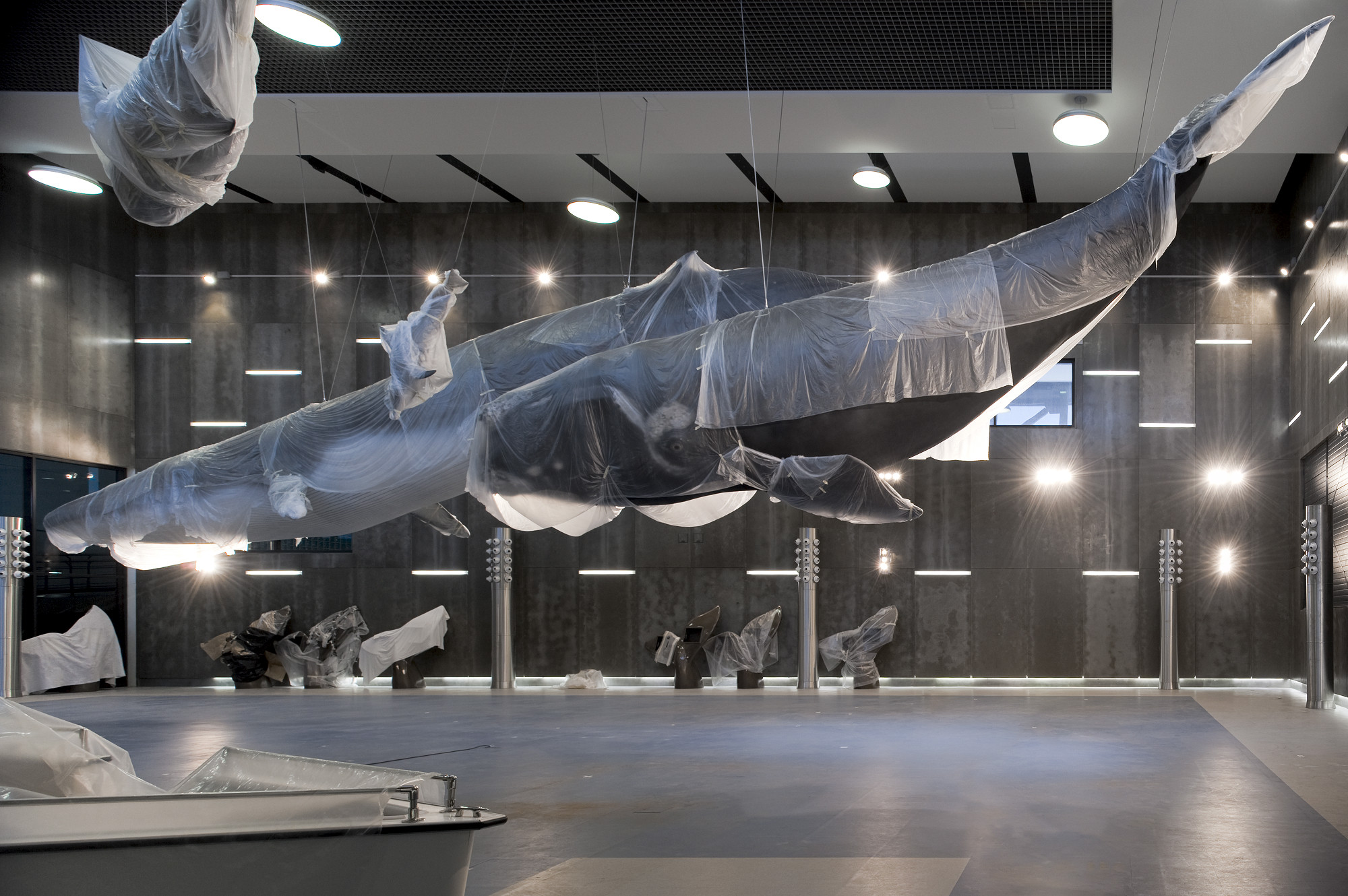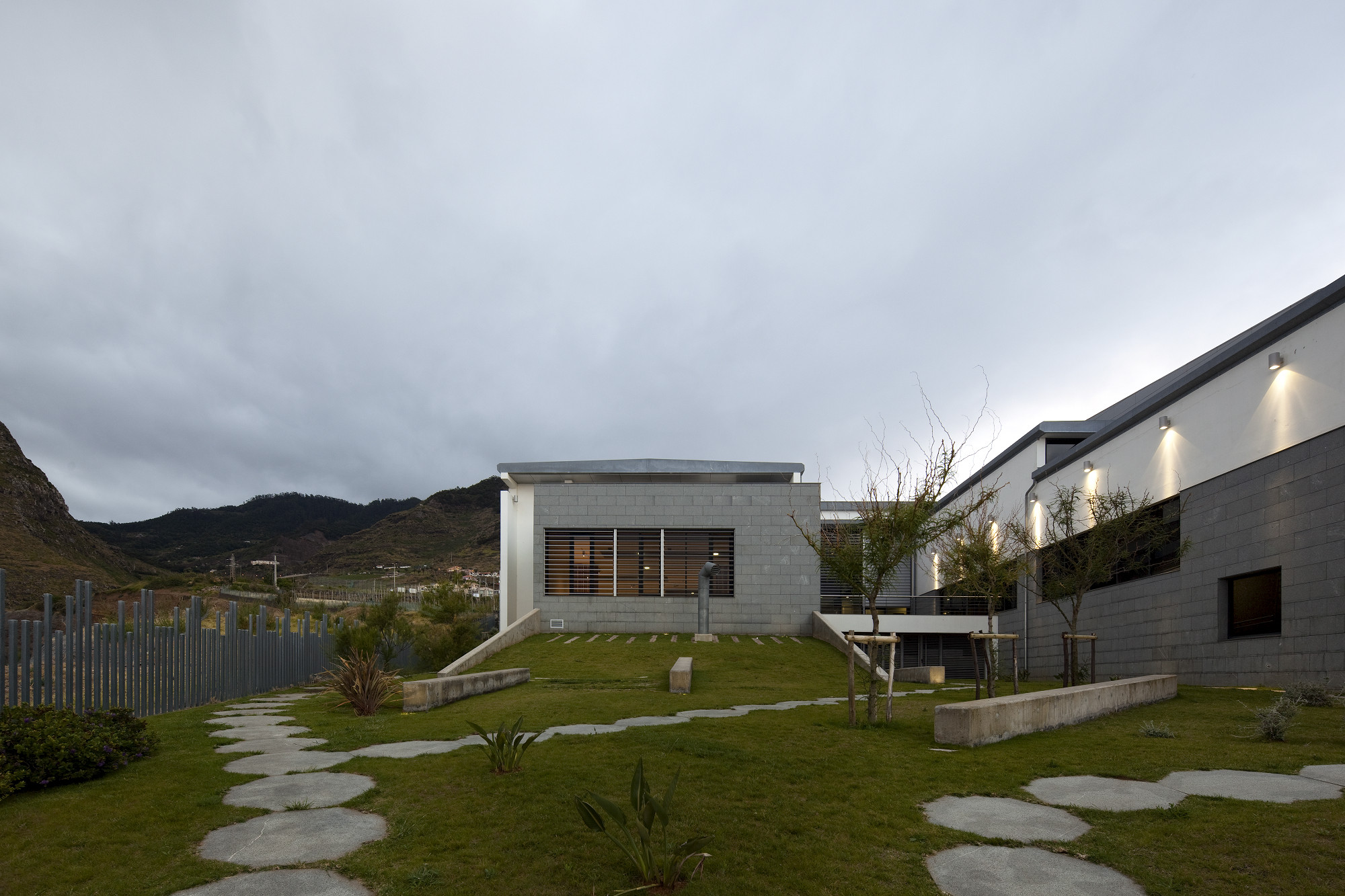
-
Architects: Espaço Cidade Arquitectos
- Year: 2011
-
Photographs:Courtesy of Espaço Cidade,

Text description provided by the architects. The Whale Museum on the island of Madeira, is established in the east side of the island, and is part of a set of social facilities conducted over the last decade, and represents the desire to expose an estate that exists for 50 years that we want to disclose on an international scale, and contribute to a scientific research in the archipelago of Madeira.

It also intends to cause the unexpected possibility of creating an exhibition space shape of the island's capital city-Funchal, integrating it in a rural environment, and projecting it with spatial dimension and complexity for a use in a large-scale, immediately limited by being locatedin a remote and very influential natural scale. Its interiority and complexity are only revealed only when we are inside, and we are surprised by animals suspended over 15 meters.

The building, incorporated in the terrain’s morphology and included as an element of the landscape, develops over the topography’s successive natural terraces until the seafront, where the shape establishes a strict dialogue with the seascape.

Opened in September 2011, the Museum of the Whale already completed, represents the work of a building whose main function is to develop the theme of the Whale, in addition to other aspects such as environmental monitoring, scientific research, scientific library, auditorium and exhibition center.

The area of the building with a total of 5.964m2, breaks down into 4 floors, where we can find several areas in particular, library, craft stores, coffee shop, center of environmental monitoring, scientific Offices (Floor2) with 1520m2, an auditorium, room for temporary exhibitions and the museum shop (Floor1) with 1055m2, showroom of Whale theme, technical and parking area (Floor0) with 2477m2; area of research and laboratories (Floor-1) with 912m2.

The museum also has gardens with a total area of landscape that is 3.425m2,and includesa directconnection from the sea to the building’s interior.














































